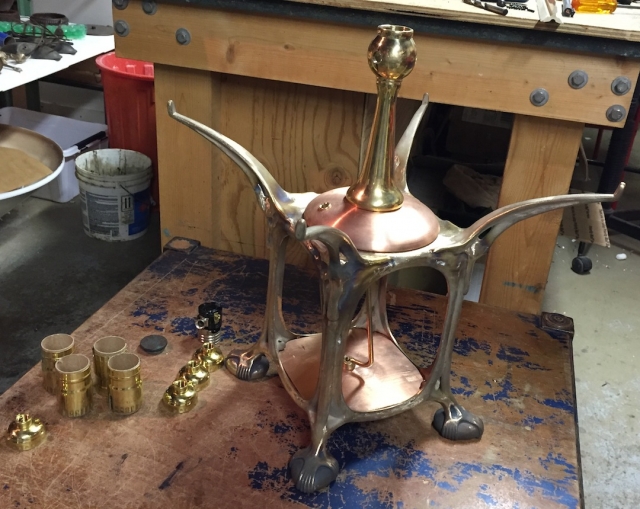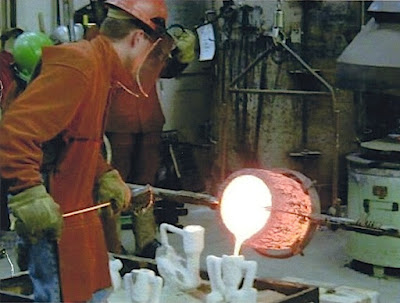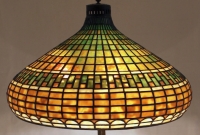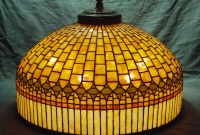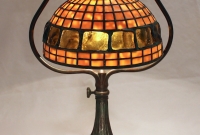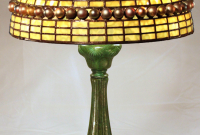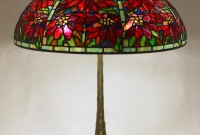In our previous post, we outlined how the waxes for reproduction Tiffany Studios lamp bases are made. Once the waxes have been created and cleaned, they are taken to our local bronze foundry.
At the foundry, the waxes are “gated”. Wax rods are attached to the pieces to create a roadway for the bronze to enter the mold while the air in the mold has an escape route. Once the wax gateways have been added, the process of creating the mold begins by dipping the wax into a thin silica slurry that completely coats the surface. After the first layer of slurry has dried, the dipping process will be repeated about 13 times until the mold reaches the desired thickness. Successive dippings are done in a more viscous silica slurry and the mold is strengthened by the addition of a crystalline silica which gives the finished mold the appearance of stucco. Once completely dry, the piece is set into a kiln and the wax is melted out, hardening the shell in the process.
While hot, the molds are stood up in a large sand box and the molten bronze is gently poured into each hot mold. The bronze is heated in a furnace to 2200 degrees and a crucible of molten bronze is moved over the top of each mold and tipped to pour the bronze. In the photo, Irwin Terry is carefully pouring the bronze into one of the molds. Irwin is on the left wearing the green hard hat, and is mostly blocked from view by the man in charge of the pour. This photo was taken at the Minneapolis College of Art and Design in 2001 when Irwin took several classes in bronze casting so we would be able to have a first hand understanding of the process and be able to interact knowledgeably with our local foundry.
Here is a link to a video of a bronze pour which was taken at the foundry we use: https://www.youtube.com/watch?v=0eSYMdWkTnw
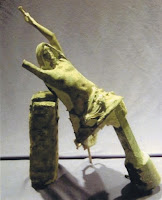 Once the bronze has cooled to room temperature, the investment mold is broken away and the raw bronze casting is revealed. The gating is still visible on this Mermaid base, and not all of the investment mold material has been removed. After the gates are removed, the process of chasing (hand cleaning) and finishing the raw bronze parts will begin.
Once the bronze has cooled to room temperature, the investment mold is broken away and the raw bronze casting is revealed. The gating is still visible on this Mermaid base, and not all of the investment mold material has been removed. After the gates are removed, the process of chasing (hand cleaning) and finishing the raw bronze parts will begin.

